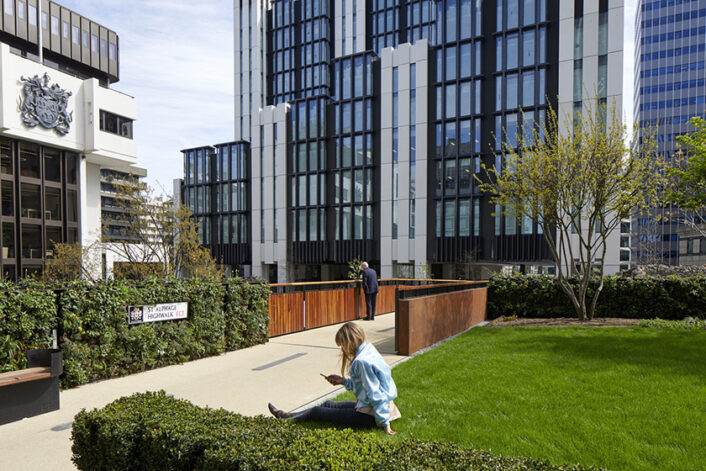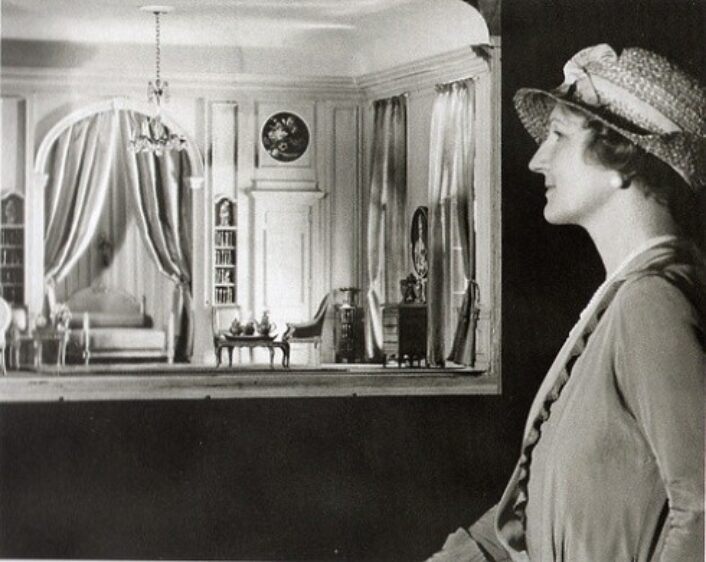Culture
Filling English palaces with art = power
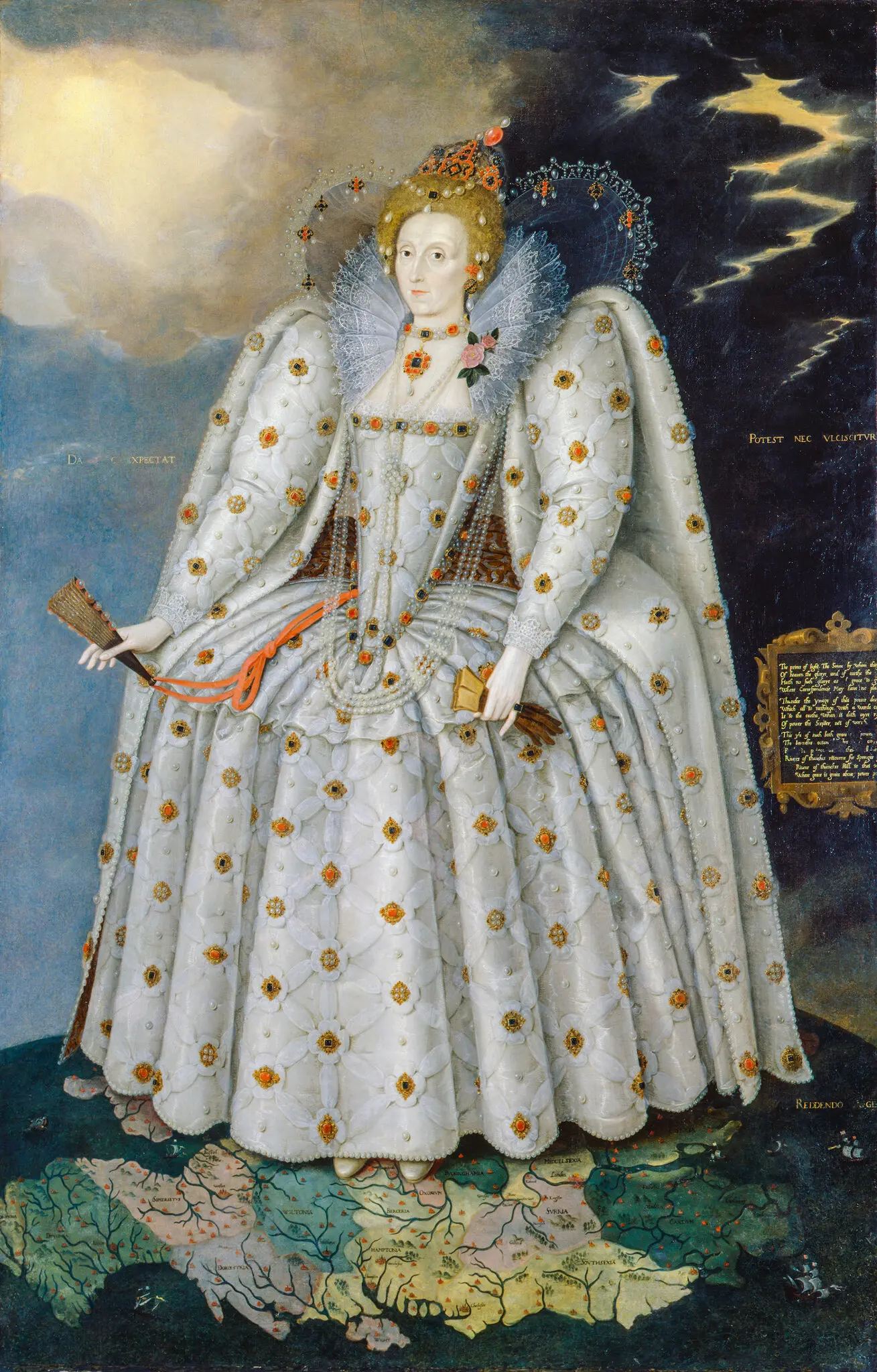
“Queen Elizabeth I (the Ditchley Portrait)” by Marcus Gheeraerts the Younger, 1592. From the National Portrait Gallery in London and part of the The Queen is shown with her feet planted on a map that represents Britain’s expansiveness and Elizabeth’s control over the large country and the Commonwealth.
Image courtesy of: The New York Times
Many things have changed over the past 600 years; however, much has stayed the same. Similarly to how today’s top 1% uses luxury items to showcase their wealth, the Tudor from England’s royal dynasty used art to portray their power and reputation. With decades upon decades of civil war, ascension to power was oftentimes quite shaky. This was no different when Henry Tudor became King Henry VII in 1485.
Sparing no expense, the King began filling his palaces with art. This standard was nothing new; King Henry’s European peers already displayed their art prominently. However for King Henry, this began a family tradition for the Tudors who would go on to occupy the throne for more than 100 years.
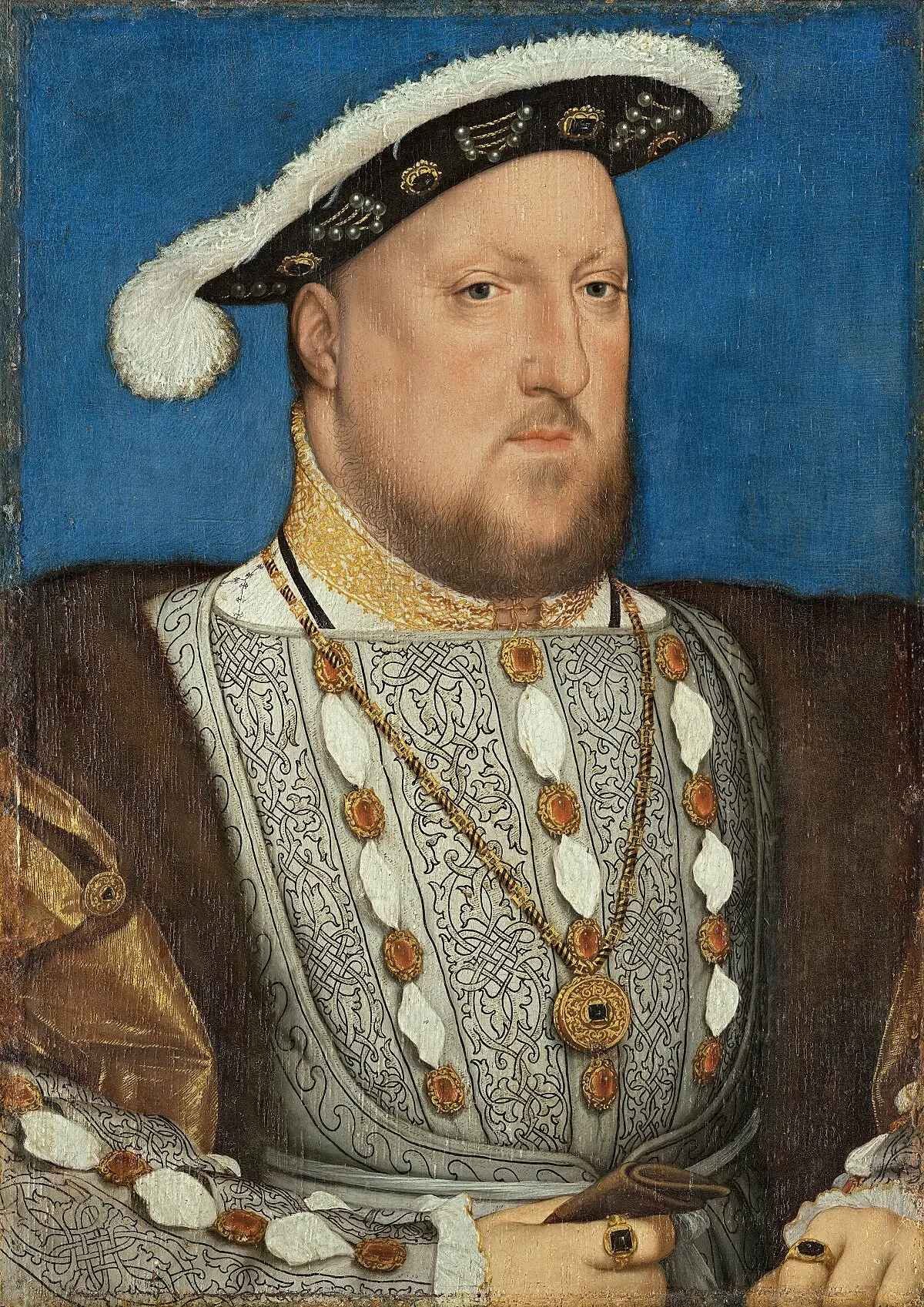
A portrait by Hans Holbein the Younger of Henry VII, circa 1537, oil on panel. From Museum Nacional Thyssen-Bornemisza, Madrid.
Image courtesy of: The New York Times
As a family, the Tudors’ time on the throne of England left an artistic legacy unlike anything seen before by an English monarch… and unlike anything seen since. In addition to paintings and portraits, the Tudors commissioned metalworks, ceramics, illuminated manuscripts, and tapestries.
Recently, the first American exhibition about the Tudors’ artistic legacy throughout their 118 year reign ran at New York’s Metropolitan Museum of Art and the Cleveland Museum of Art, in collaboration with the Fine Arts Museums of San Francisco. The exhibition draws on works from museums across the United States and Europe. Groundwork for the monumental show began a few months prior to the Brexit referendum in 2016. Ironically, the exhaustive exhibition was installed just shortly after Queen Elizabeth II’s death last year.
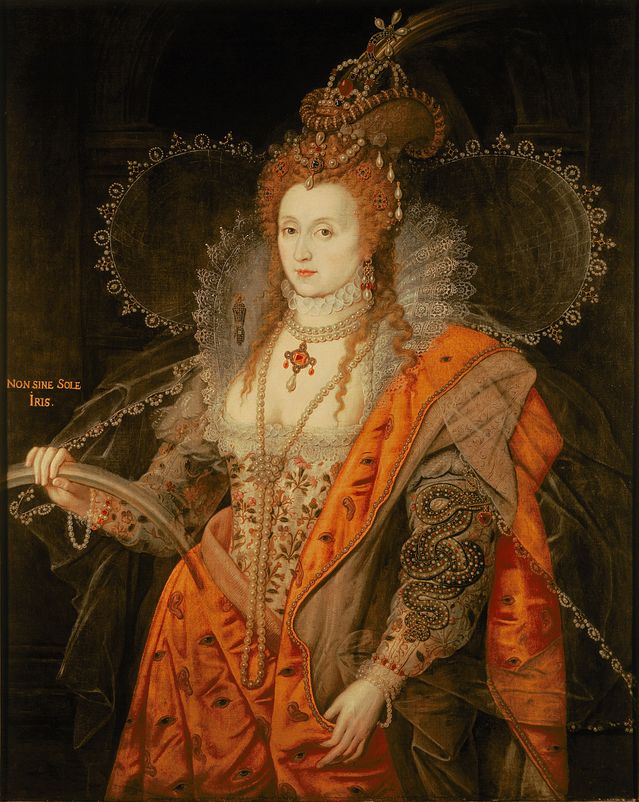
Painted by Marcus Gheeraerts the Younger, “Elizabeth I (The Rainbow Portrait),” 1602.
In the portrait, the inscription says “non sine sole iris” which means “without the sun, there can be no rainbow.” Understanding that the rainbow is a symbol of peace, the portrait is saying that without the Queen, peace is not possible.
Image courtesy of: The Wall Street Journal
Using a number of international artists such as Florentine sculptors and German painters, and some of Europe’s best artisans, including Flemish weavers, the Tudors presented themselves as almighty. Much of this had to do with King Henry’s break from the Catholic Church; in declaring himself the head of the Church of England, he was essentially saying that the monarch did not need a pope.
The King went on to destroy England’s Catholic art and (courtesy of The Wall Street Journal), “then commissioned substitute masterpieces as nationalist necessities.” The visual portrayals of power are a hoax supposed to shield the general population from the dynasty’s many weaknesses.
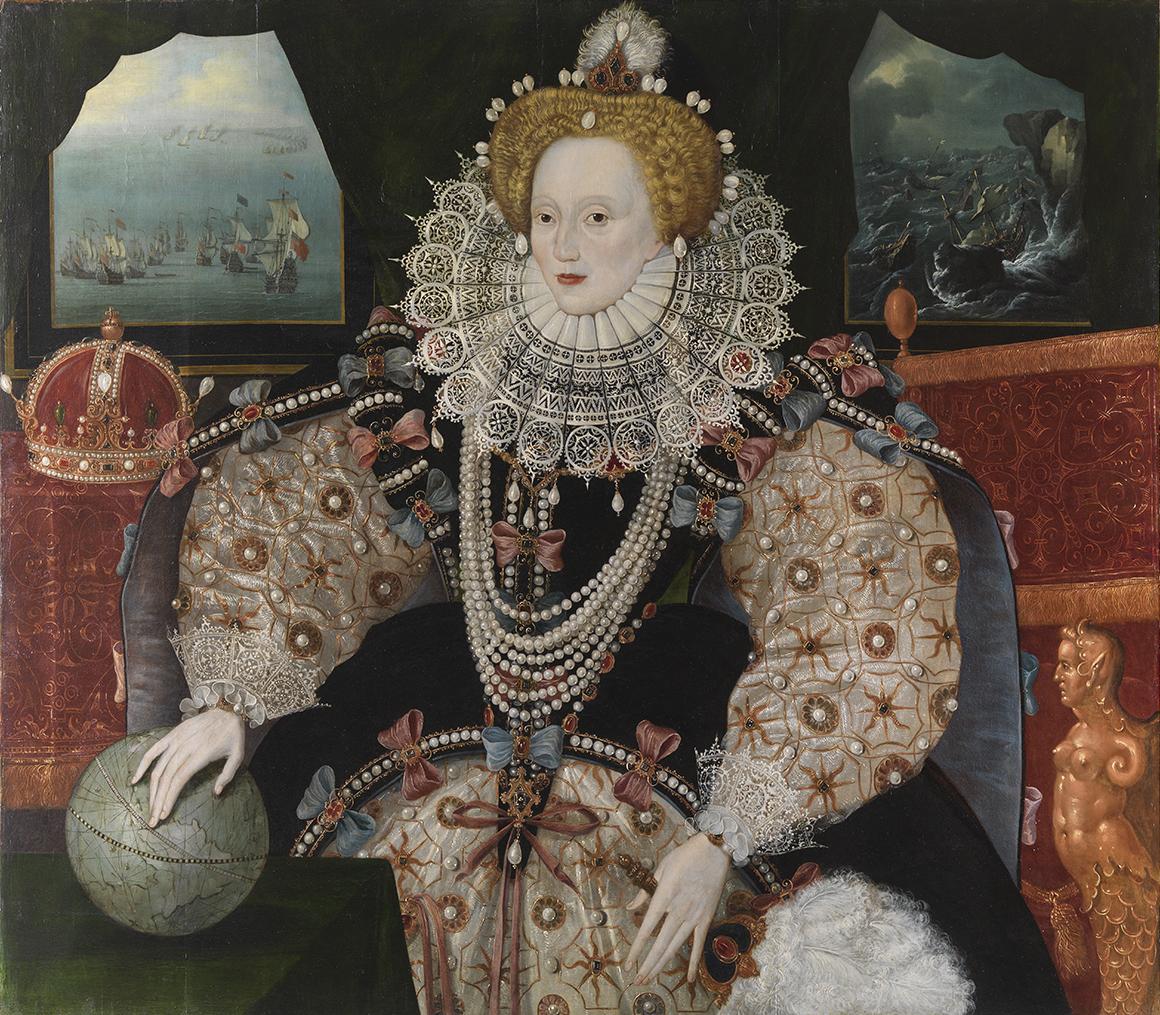
“Armada Portrait” of Elizabeth I is one of three versions of the painting that survives today. The portrait commemorates the most famous victory of the Queen’s reign, the defeat of the Spanish Armada in 1588. The Queen is captured in all her glory with (on the right) an image of the dilapidated Spanish fleet in stormy seas behind her and (on the left) her English ships sailing calming through the sea.
Image courtesy of: Royal Museums Greenwich
The Tudors brought portraitists from Germany and the Netherlands to work in England. The first portraitist was Hans Holbein the Younger who was initially invited by Sir Thomas More to visit London in 1526. The King employed Holbein to be a court painter… he was able to paint Henry several times.
The portraitists that Queen Elizabeth brought in traveled throughout Europe during her 45-year reign. The royals were painted with iconography that (courtesy of Royal Museums Greenwich) “promoted notions of empire and power, and of purity and virginity. They were loaded with symbolic objects such as crowns, globes, feathers and many, many pearls.” Kristian Martin, Exhibitions Interpretation Curator at Royal Museums Greenwich, was quoted as saying that the queen was “an absolute master of manipulating her image.” Some might attribute that to the fact that as an unmarried queen without an heir, she was considered in a particularly vulnerable position.

From “Image courtesy of: The New York Times, photographed by: Anna-Marie Kellen
We would be remiss to neglect comparing the Tudor’s art to today’s incessant world of social media. It has been said that Elizabeth I was so concerned about her appearances that she drafted a proclamation stating the no one could make unauthorized portraits of her. This was an attempt to put an end to the cartoon-like images that were making their way to the public; unfortunately, she had no power to stop European printmakers outside England’s limits.
Fast forward five hundred years and Annie Leibovitz’s iconic 2008 photograph of Queen Elizabeth II falls into place. The photograph depicts the Queen wearing her crown jewels and a beautiful tiara; however rather than embarking on a formal affair, she is photographed looking out a window into a garden. The juxtaposition between the Queen’s duty as a monarch and the simplicity of everyday life is quite striking.
In short, the Kardashians were far from the first family dynasty to perfect the art of a selfie for personal financial gain. The Tudors were the true the pioneers at using imagery for PR purposes.
